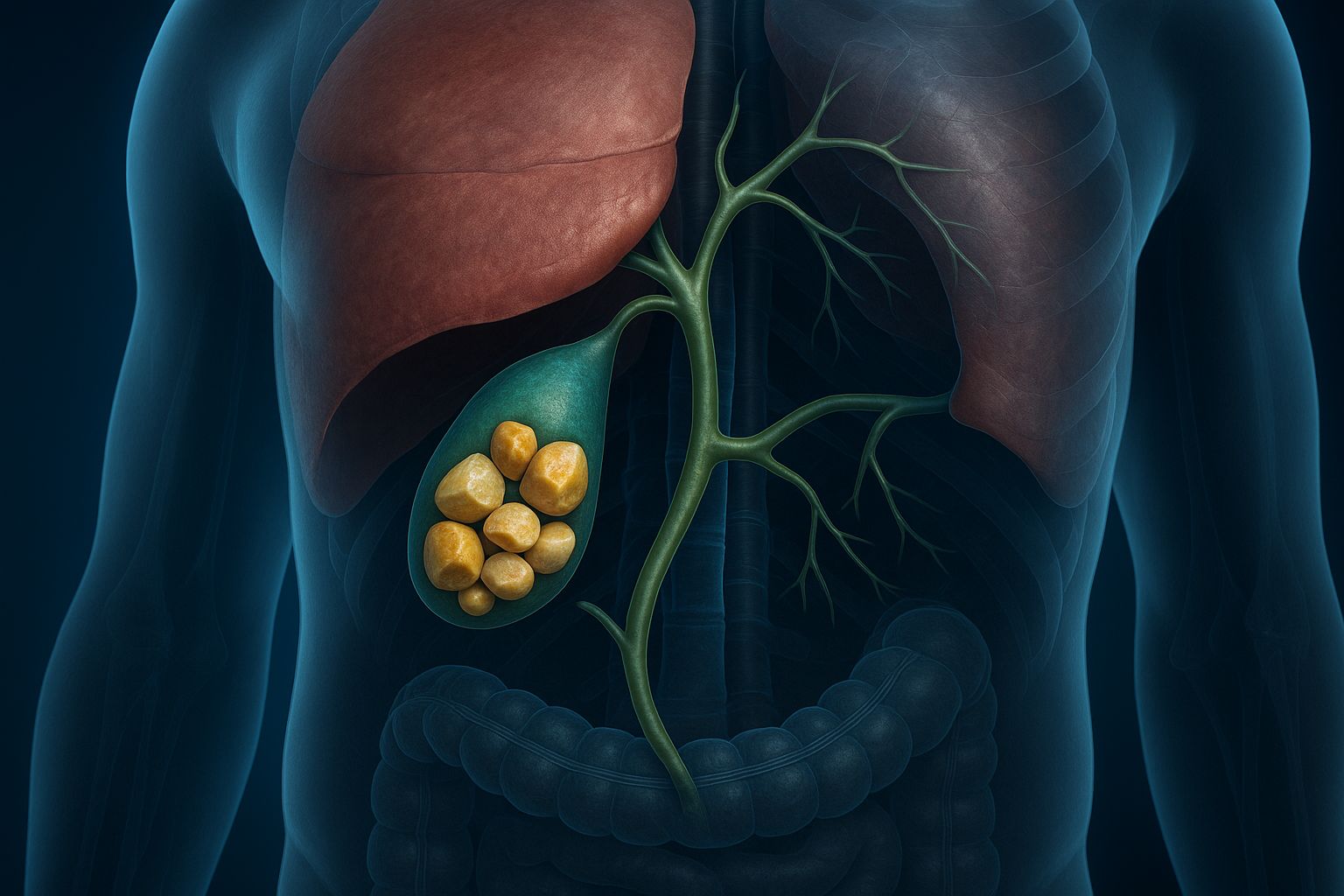Gallstones and Gallbladder Diseases: Symptoms, Diagnosis, and Treatment Options
What Are the Gallbladder and Gallstones?
The gallbladder is a small organ located just below the liver. It stores bile, a digestive fluid produced by the liver that plays a crucial role in breaking down fats during digestion. Over time, if the proportions of substances in the bile (such as cholesterol, calcium bilirubinate, or calcium carbonate) become imbalanced, solid formations called gallstones may develop.
Types of Gallstones
- Cholesterol Gallstones: The most common type, formed due to excess cholesterol. They are usually light yellow and grow slowly.
- Pigment Gallstones: Dark-colored stones formed due to a buildup of bilirubin. They are more common in people with liver disease, cirrhosis, or bile duct infections.
What Are the Symptoms of Gallstones?
Many people with gallstones experience no symptoms—a condition referred to as “silent stones.” However, if the stones block a bile duct or cause inflammation, the following symptoms may occur:
- Severe pain in the upper right abdomen, just below the rib cage
- Pain radiating to the back or right shoulder
- Nausea and vomiting
- Fever and sweating
- Gas, indigestion, and abdominal bloating
- Discomfort after eating
These symptoms are often triggered or worsened by fatty or heavy meals.
How Are Gallstones Diagnosed?
1. Cholangiography
A radiological technique that visualizes the bile ducts using contrast dye. A scope is inserted endoscopically into the bile ducts, allowing detailed imaging of the gallbladder and liver channels. With the ERCP (Endoscopic Retrograde Cholangiopancreatography) method, stones can be treated during the same procedure.
2. Computed Tomography (CT)
CT scans provide cross-sectional images of the body and can clearly detect gallstones. If needed, a contrast agent is injected to enhance image detail.
3. Cholescintigraphy (HIDA Scan)
A mildly radioactive substance is injected intravenously to visualize gallbladder function. This method can identify blockages or movement disorders in the bile ducts.
Treatment Options for Gallstones
Dietary Management
In mild cases, a low-fat, high-fiber diet is usually the first recommendation. Fatty and heavy foods can trigger symptoms.
Laparoscopic Cholecystectomy
Surgical removal of the gallbladder is called cholecystectomy. The most commonly used method today is laparoscopic (minimally invasive) surgery. Small incisions are made in the abdomen, and the gallbladder is removed using a camera. This approach results in less pain, shorter hospital stays, and faster recovery.
Open Surgery
In rare cases—such as when other bile duct issues are present or when adhesions from previous surgeries exist—open surgery may be necessary.
Can You Live Without a Gallbladder?
Yes. People can live healthily without a gallbladder. The liver continues to produce bile, but instead of being stored, the bile flows directly into the small intestine. As a result, some people may experience diarrhea, gas, or bloating after eating fatty foods. These symptoms can often be managed by adjusting the diet.
Who Is at Risk?
Certain individuals are more likely to develop gallstones. Risk factors include:
- Female gender (especially during reproductive years)
- Age over 40
- Being overweight
- Rapid weight gain or loss
- Pregnancy
- Diabetes
- High-fat diets


